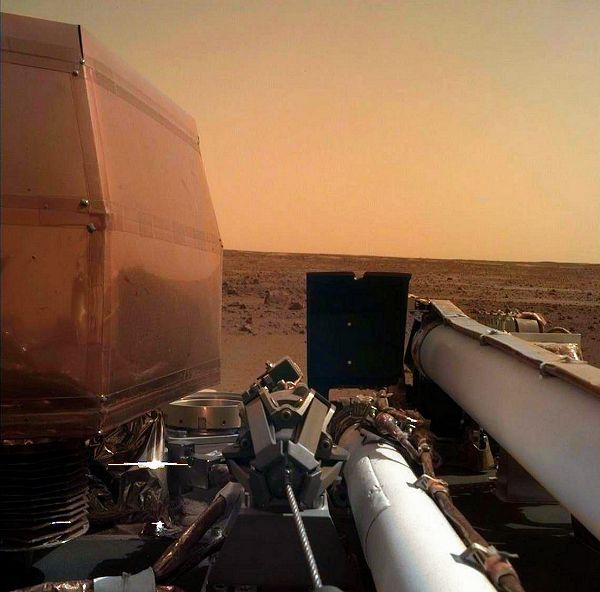THE INSIGHT PROBE AT LAND ON MARCH |
|
| After almost six months of travel in space and 484,773,006 kilometers traveled between Earth and Mars, NASA's InSight probe landed on the Red Planet on November 26, 2018. Launched by NASA on May 5, 2018 as part of the Discovery program, the probe will study the internal structure of the red planet, including evaluating its seismic activity.
More specifically, InSight will aim to study the internal structure of Mars. Like the other three terrestrial planets - including the Earth - the red planet is formed by the gradual accretion of rock bodies, until its mass and temperature become sufficient for the process of planetary differentiation to take place. As Mars does not have tectonic plates, its internal structure has not undergone any major changes since the formation of the planet and must have retained geophysical signatures of this process of differentiation. By analyzing the different parts of its structure - crust, mantle and core - InSight should be able to collect important information on how the planets were formed 4 billion years ago. Scientific operations will not begin right away. Seis seismometer and HP3 heat flow sensor must be installed on the ground using a robotic arm. The maneuver is not planned for two to three months. Two European instruments aboard InSight will allow to analyze the internal structure of Mars 1 ° Seism seismometer (Seismic Experiment for the Interior Structure), developed by the Institute of Earth Physics of Paris under the authority of CNES, which is a three-axis seismometer of about 30 kg, including seismic sensors and temperature. It will study the Martian tectonic activity and make seismic surveys. 2 ° HP3 Heat Flow and Physical Properties Package developed by the German Space Agency. It is a thermal probe that will sink up to 5 meters deep below the Martian surface. Its role is to measure the heat flow released by the Martian nucleus, in order to better understand its evolution. These tools will be put in place in sixty days while an additional seven weeks will be necessary for the thermal probe to sink into the Martian soil. Good luck to InSight who deployed its two 2.2 m wide solar panels and will pierce the Martian depths, listening to the heartbeat of Mars. . |
|
| Kelly Donaldson for DayNewsWorld | |
 |
|




